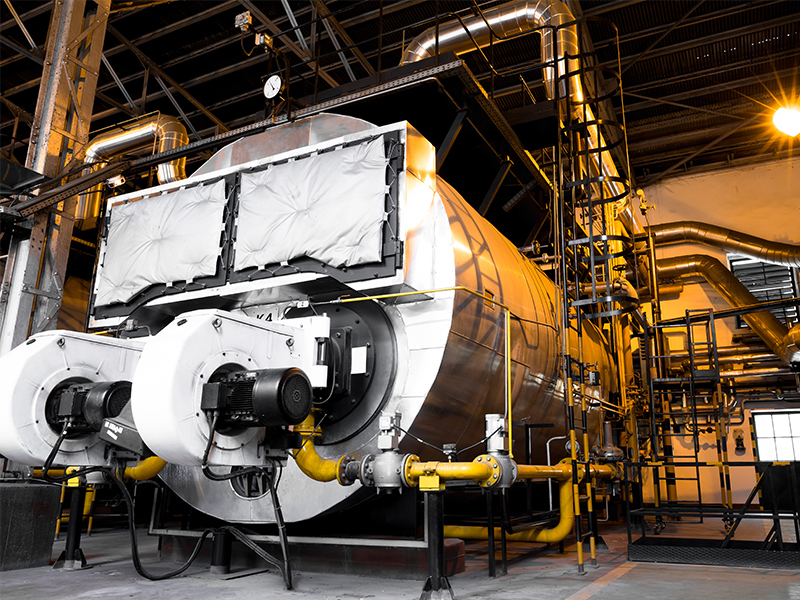As you send your children back to school and Halloween decorations begin to appear in stores, your facility operators may have already begun the process of preparing off-line boilers for the winter season. Regardless of if they were stored dry or wet, steps need to be taken to ensure a safe start-up of off-line boilers. Each boiler is different, and before startup, we recommend that all engineers consult the manufacturer’s manual to carefully follow all safety checks and startup procedures. Below we outline basic start-up processes for small to medium sized package boilers. Please note, these do not apply for larger-high pressure boilers.
Boilers that have been stored dry will need to be opened, inspected and cleaned:
- Check for corrosion or scale blockages
- Remove desiccants (if used)
- Clean steam and mud drums of chip scale
If your boiler has been in wet storage, we recommend draining the boiler and inspecting the internal heat exchange surfaces, safeties, pressure relief valves, and water level control devices for blockage or debris.
Before the power switch is turned on, operating engineers should survey and inspect the details of the boiler system and perform start-up checks.
- Prior to filling the boiler, ensure the boiler pretreatment equipment is operational, such as softeners or reverse osmosis.
- Refill the boiler with softened and treated feedwater, untreated water can promote corrosion.
- Confirm all lockout/tagout locks have been removed, all ventilation and combustion air openings and louvers are clean and free of any obstructions, and the boiler water level is correct.
- Test the low water fuel cutoff and verify that all stack dampers are open.
- Examine the boiler furnace for foreign material, and the furnace and flue passes for fuel accumulation.
- Check the fuel train valve position and operation of the feed/condensate systems.
Once start-up checks are complete, initiate the normal start-up sequence after closing the operator switch. This typically includes operating the controls and interlocks (safety controls) closed.
- Start the fans and purge the boiler, confirming the purge requirements have been met.
- Energize the main fuel valve and igniter, verifying the ignition flame within ten seconds.
- Monitor the main flame after it has been established, then de-energize the ignition.
- Release the fire rate (combustion) control to demand.
- After the unit has reached a warm temperature, turn the power switch off.
- Verify the shutdown cycle and restart.
- Allow the unit to reach full firing rate and open isolation/stop valves to release steam into the system.
Monitor the system throughout the day checking:
- Flame
- Stack outlet
- Controls and linkage
- Gasket tightness (both water side and fire side)
Steaming at low-load or no-load (undercycling) when starting an off-line boiler can expedite internal corrosion rates resulting in unplanned outages or repairs. To help prevent this, maintain adequate chemical residuals during the startup period. We recommend an oxygen scavenger residual of 15 to 20% higher than normal winter operation, while supplementing the alkalinity as necessary to maintain a hydroxyl alkalinity above 250 ppm. Keep an eye on your chemical feed equipment and treatment program to ensure it’s working as expected and the treatment program is optimized for the boiler’s feedwater quality and operating pressure.
Have questions regarding boiler start-up? Contact us

